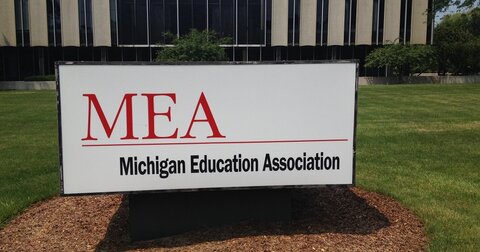32,000 Flee Teachers Union Under Michigan Right-To-Work Law
Former member blames Michigan Education Association’s bullying tactics
The state’s largest teachers union has lost 32,393 active members since Michigan’s right-to-work law was enacted six years ago this month, a 28 percent drop in membership. That’s according to a report the Michigan Education Association filed with the federal government and released in November.
Membership in the MEA among teachers and education support professionals dropped from 117,265 in 2012 to 84,872 in 2018. The MEA’s membership dropped 2,756 members since 2017, according to its recent disclosures.
In 2013, former MEA President Steve Cook appeared on a PBS political roundtable; the MEA had reported losing just 1,500 members in the first year of right-to-work.
“I wouldn’t have been surprised if we’d lost any,” Cook said at that time. “We just didn’t know. We had no idea. Our worst fear was thousands. That’s everybody’s worst fear.”
The MEA didn’t respond to an email seeking comment.
Jim Perialas is the president of the Roscommon Teachers Association, which left the MEA in 2012 and now operates as an independent union. Perialas said he wasn’t surprised that the MEA lost so many members.
He said the MEA’s strong-arm tactics are to blame. The MEA and its local affiliates have bullied members who left the MEA by posting their names in public spaces. The MEA also has spent thousands of dollars to hire collection agencies to pursue members who were not paying their union dues.
“They were mean and nasty with the ones who started to leave due to right-to-work,” Perialas said. “Rather than take an approach that I’ve lost this person for a year and I’ll work hard to get them back, they sic collection agencies on them. It’s a flat out dumb approach they took from the beginning. The approach they were taking was trying to bully people to stay in rather than showing they have value.”
The MEA and other public employee unions around the nation could face costly new challenges in the wake of the U.S. Supreme Court's June 2018 ruling in the case of Janus v. AFSCME. The court held that compulsory withholding of union fees from a public employee's paycheck violates their First Amendment rights to freedom of speech and freedom of association. Raising the practice to a civil rights violation has opened the possibility that workers who had dues and fees involuntarily withheld may be entitled to clawback payments that could cost government unions tens of millions of dollars going forward.
Michigan Capitol Confidential is the news source produced by the Mackinac Center for Public Policy. Michigan Capitol Confidential reports with a free-market news perspective.


 MEA head boasts of membership growth, but numbers tell a different story
MEA head boasts of membership growth, but numbers tell a different story
 Paraprofessional in Traverse City gets MEA decertified and replaced
Paraprofessional in Traverse City gets MEA decertified and replaced
 Michigan Education Association is down 37,000 members in a decade
Michigan Education Association is down 37,000 members in a decade

 Michigan lawmaker pitches $2B transit proposal
Michigan lawmaker pitches $2B transit proposal
 Michigan Tech is No. 1 for free speech, FIRE reports
Michigan Tech is No. 1 for free speech, FIRE reports